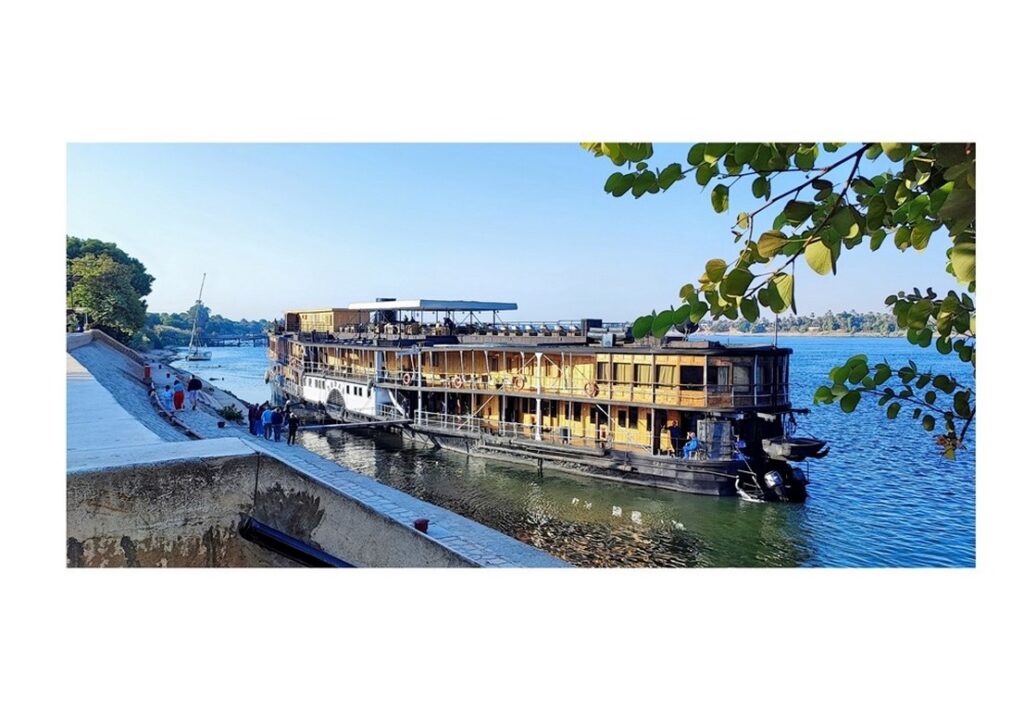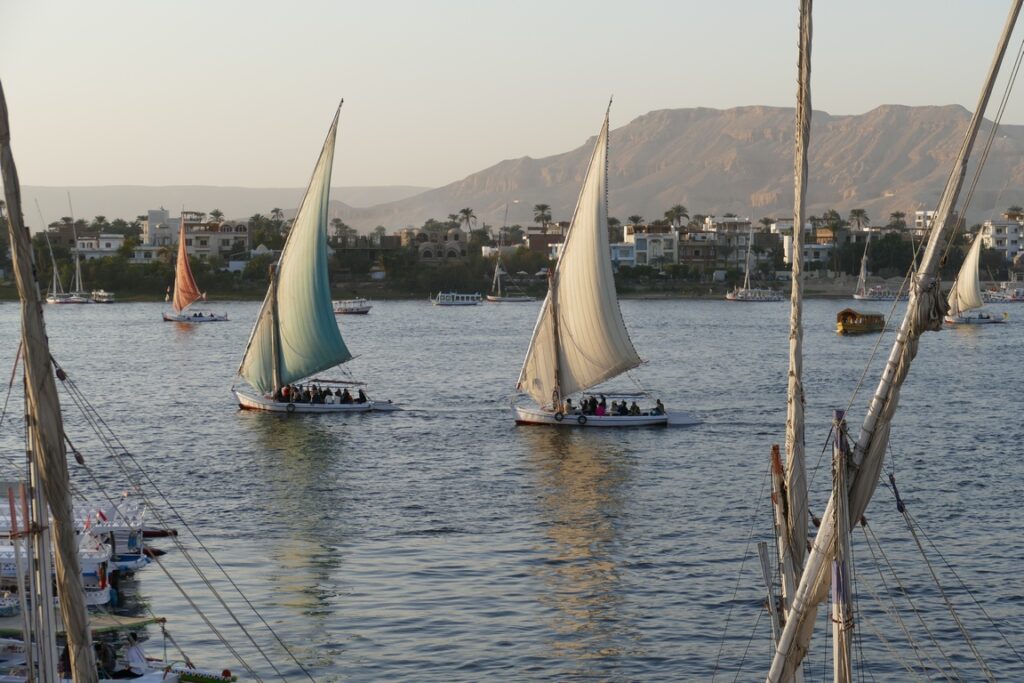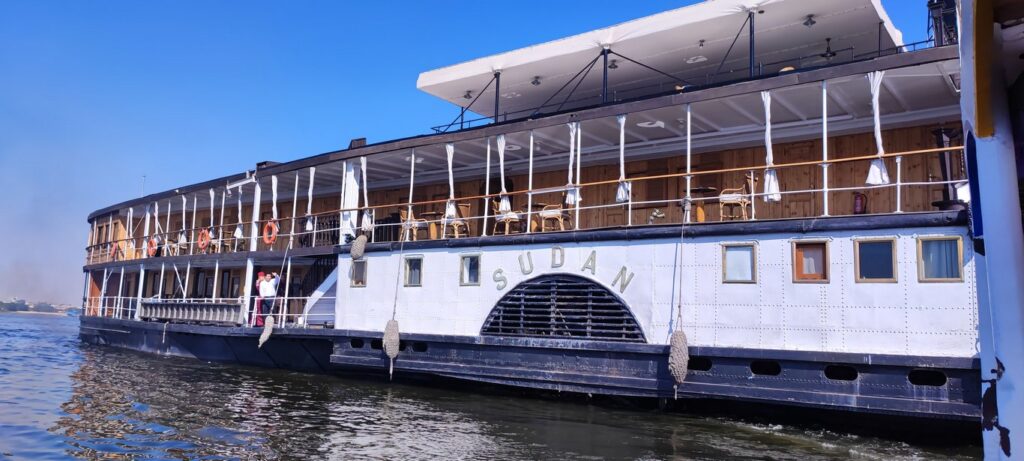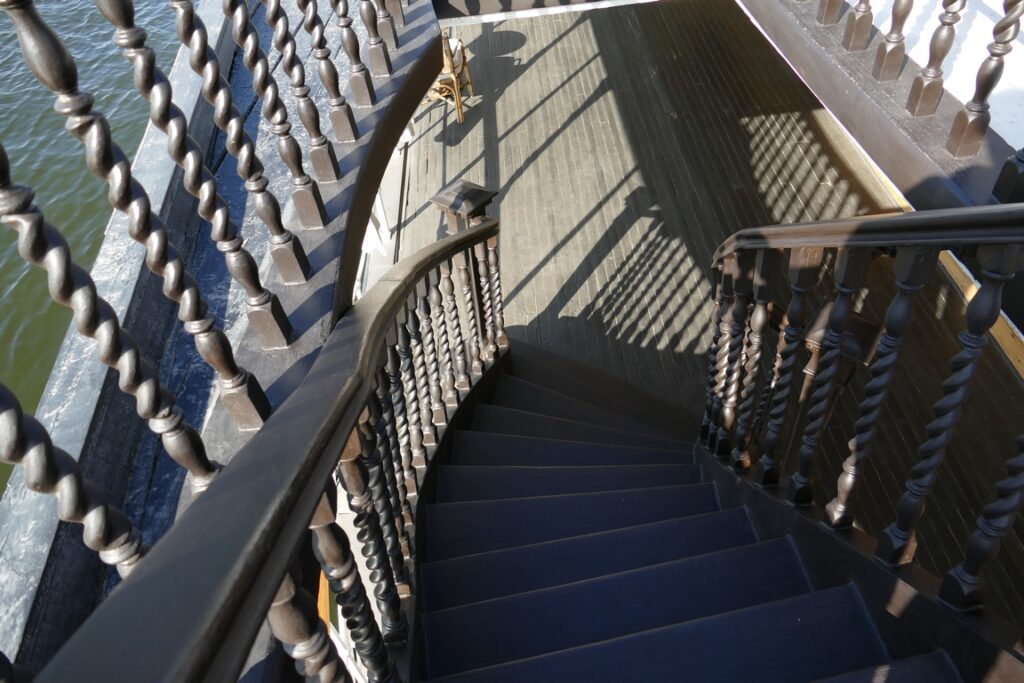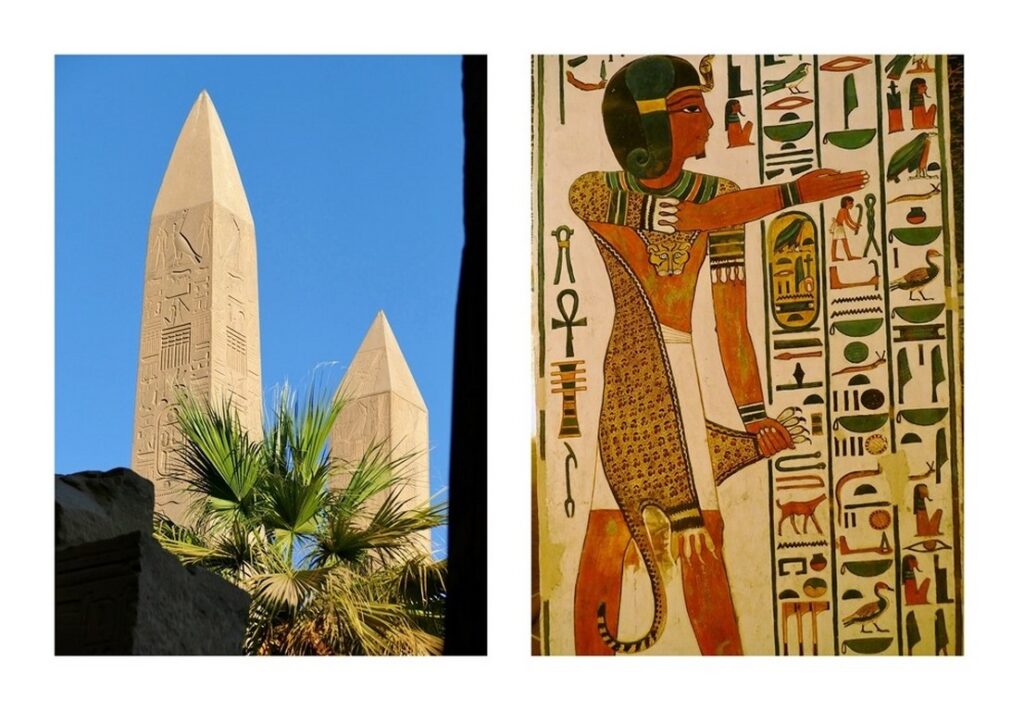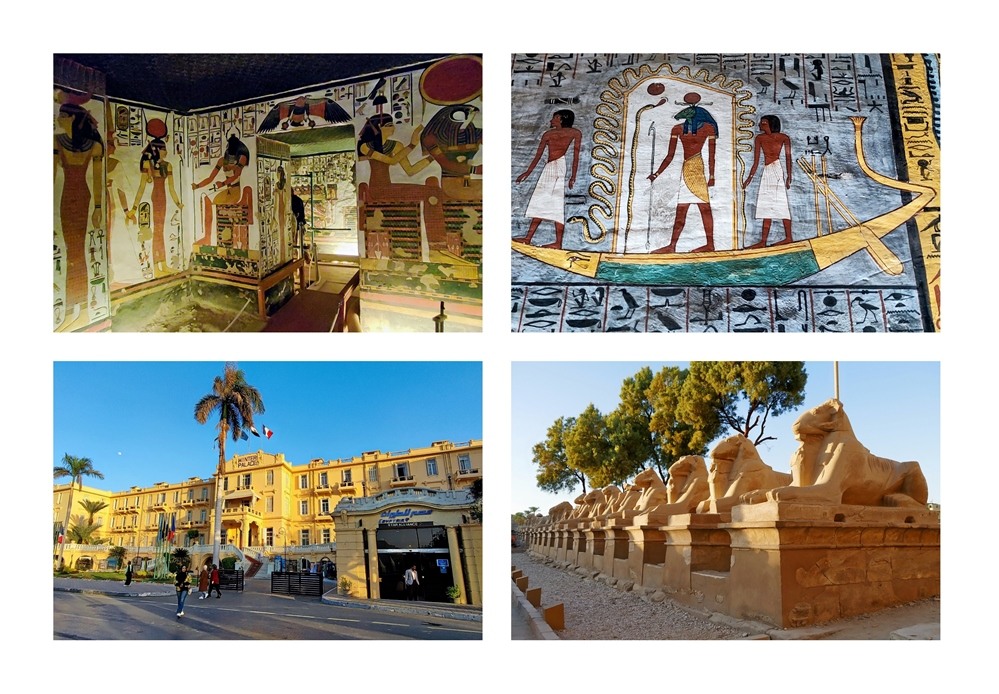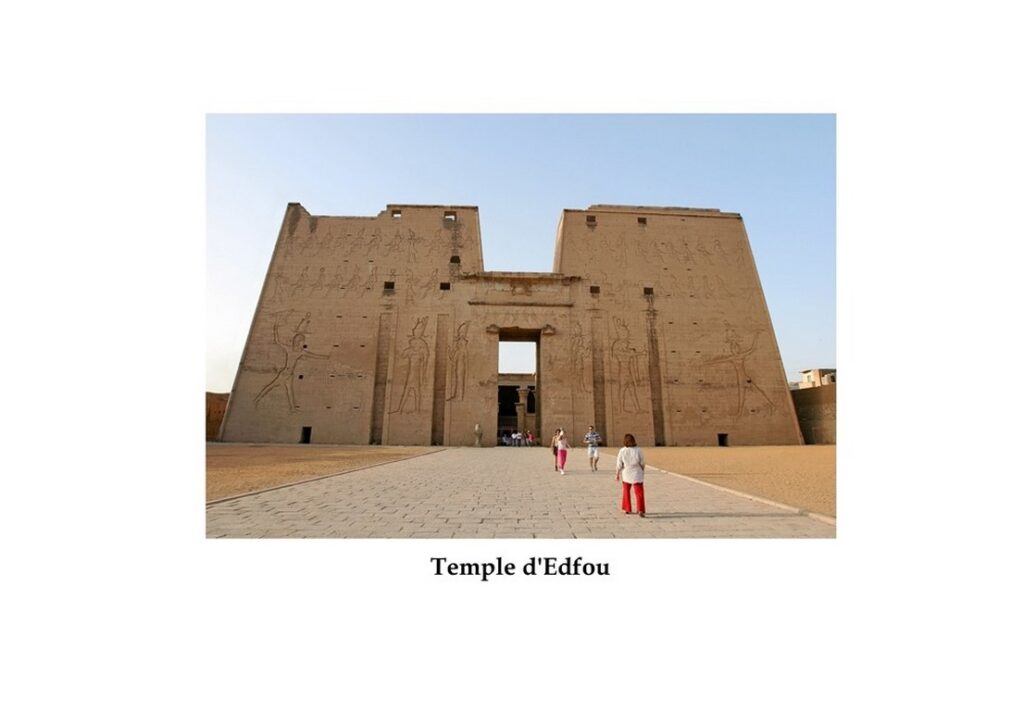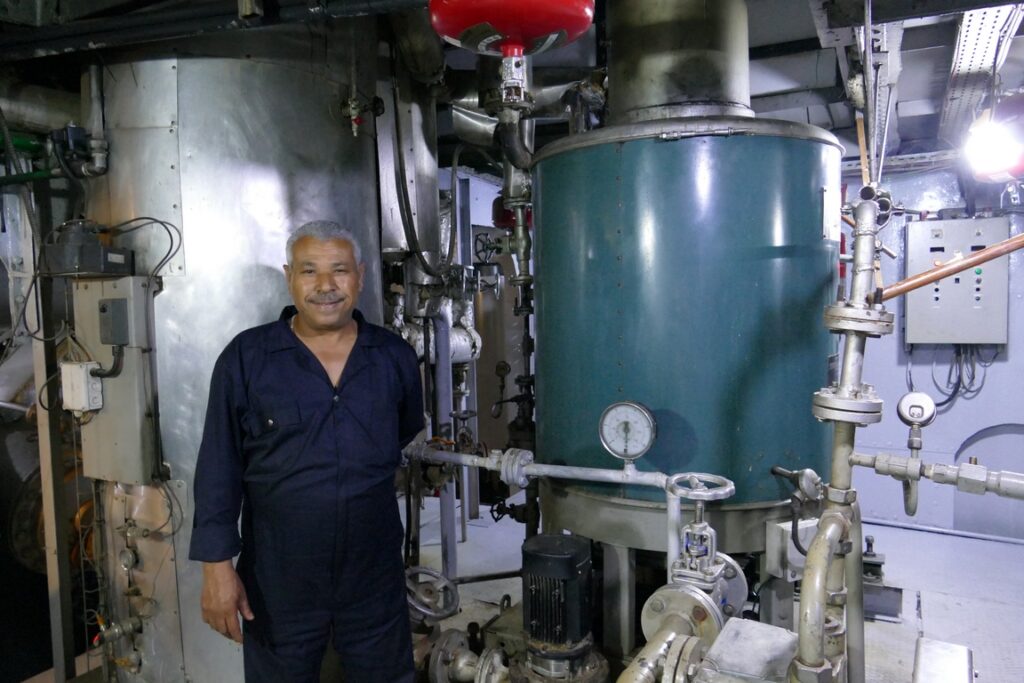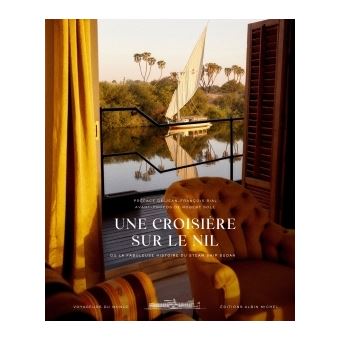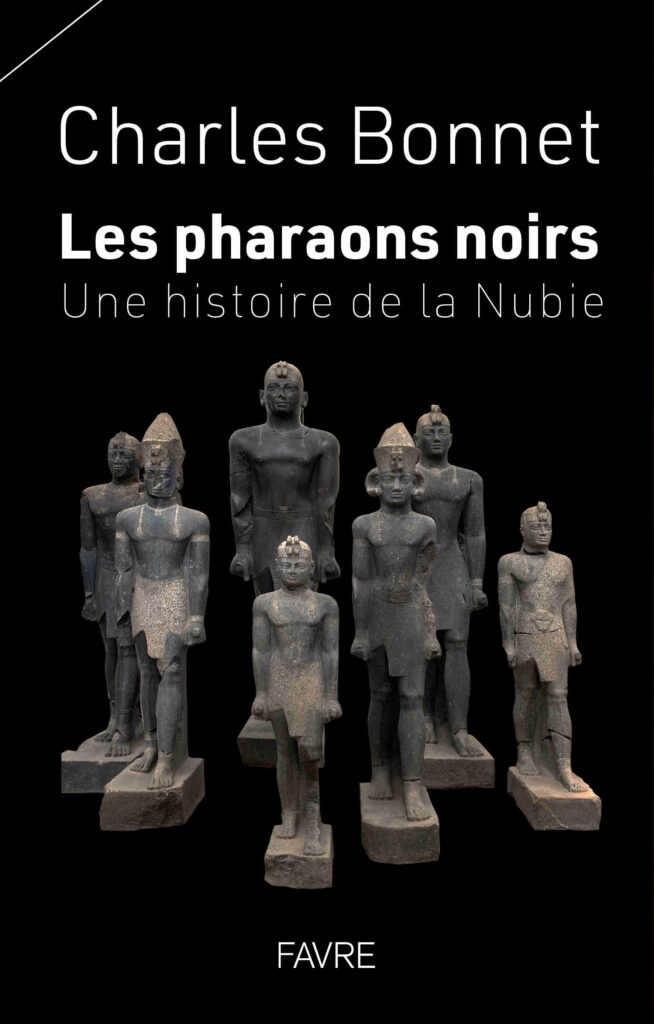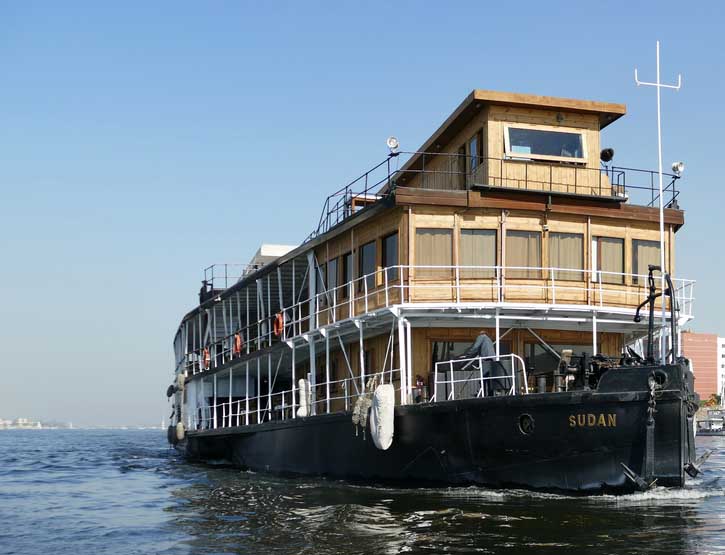
It was aboard a legendary steamer, the SS SudanThe last paddlewheel steamer will take us on a journey back in time, from the wonders of ancient Egypt to the elegance of the 1930s. From Luxor to Aswan, the last paddlewheel steamer takes us on a journey through time, between the wonders of ancient Egypt and the elegance of the 1930s.
When, in 1907, Pierre Loti embarked on a cruise on the Nile organised by the Thomas Cook company, he couldn't help but exclaim: "Enticed by the advertisements, the Cookies flock in docile herds every winter." What would he say today? The paddle steamers have been replaced by floating factories, most of them polluting, but the fascination with Egypt remains. Cook succeeded in his challenge: to make navigation on the Nile accessible to as many people as possible.
However, there is still a more intimate and peaceful way of discovering this river, by taking the last steamship still cruising on the Nile, the SS Sudan.
The most elegant of boats on the noblest of rivers

This little floating palace, with its old-fashioned charm, was built in Scotland in 1921 and then sent in kit form to Cairo to the tour operator Thomas Cook & Son, to whom the Khedive Ismaïl gave the concession for all tourist navigation on the river. She was the last steam boat to be built by Cook, who later switched to diesel engines for his ships. It was commissioned by and for the royal family of King Fouad and his son Farouk, the monarch being King of Egypt and Sudan at the time. Farouk did not sail much on the Sudan, "only a few days a year", according to the ship's manager Amir Attia. In 1922, the discovery of Tutankhamen's tomb gave a new boost to tourism in Egypt. The ship, popular with the British aristocracy, diplomats, intellectuals and archaeologists, was devoted to cruises and voyages to Aswan. Travelling up the Nile to the Egyptian highlands now took just twenty days, compared with fifty on a sailing dahabieh.
During the winter months, the land of the Pharaohs is a fashionable holiday destination. Between two sailings aboard these steamers, the elite bask in the glow of the Winter Palace in Luxor and the Old Cataract in Aswan. On board, passengers are pampered. The ladies visit the temples of Karnak and the Valley of the Kings on donkey-back before meeting for tea or a game of cards in the lounge or on deck, while the gentlemen gather in the bar or smoking room. For dinner, everyone dresses up, and it's still the same today, minus the tie. Despite the First World War, the heyday of these ships lasted for twenty years.
Personalities and celebrities followed one another on board. The archaeologist Max Mallowan took his wife, Agatha Christie, on board in 1933. On this ship, the famous novelist had the idea for her novel "Death on the Nile". The Sudan, renamed Karnak in the book, would be the setting for the plot, masterfully led by a certain Hercule Poirot. It was also on this steamer that Andy Wilson's second film adaptation was shot in 2006.
Rescue and rebirth of Sudan

But the Second World War sounded the death knell for tourism in Egypt. The SS Sudan was abandoned in a Cairo shipyard for half a century before being restored by an Egyptian shipowner in 1991. She was given her first facelift before being refloated in 1993 for a few years, before falling back into oblivion. The salvage of the SS Sudan was the work of Jean-François Rial, CEO and co-founder of the Voyageurs du monde agency, and above all his father, a retired mechanical engineer, Odilo, accompanied by an Egyptian engineer, Adel Shokry, and a lover of old machines, Fabien Cazenave. The ship, abandoned in a Cairo shipyard, is in a state close to wreckage, and the work ahead looks... pharaonic. But that's no problem! The tour operator has teamed up with the Egyptian owner to bring her back to life.
After six months of work, the Steam Ship Sudan returned to the Nile. In 2007, the tour operator acquired the entire vessel, which was then put into dry dock for a major refit. "The old steamer is undergoing a drastic regime that will lighten her by 200 tonnes, reducing her draught and fuel consumption. The hull was repaired and buoyancy reinforced with watertight caissons. A bow motor was installed, making docking almost child's play for the raïs (captain), who guides it using a joystick. The exterior pitchwood panelling and teak floors are stripped and oiled, a process that is repeated every year. Just like the hull, which is regularly checked and repainted", says Amir.
Twenties style mixed with Art Nouveau
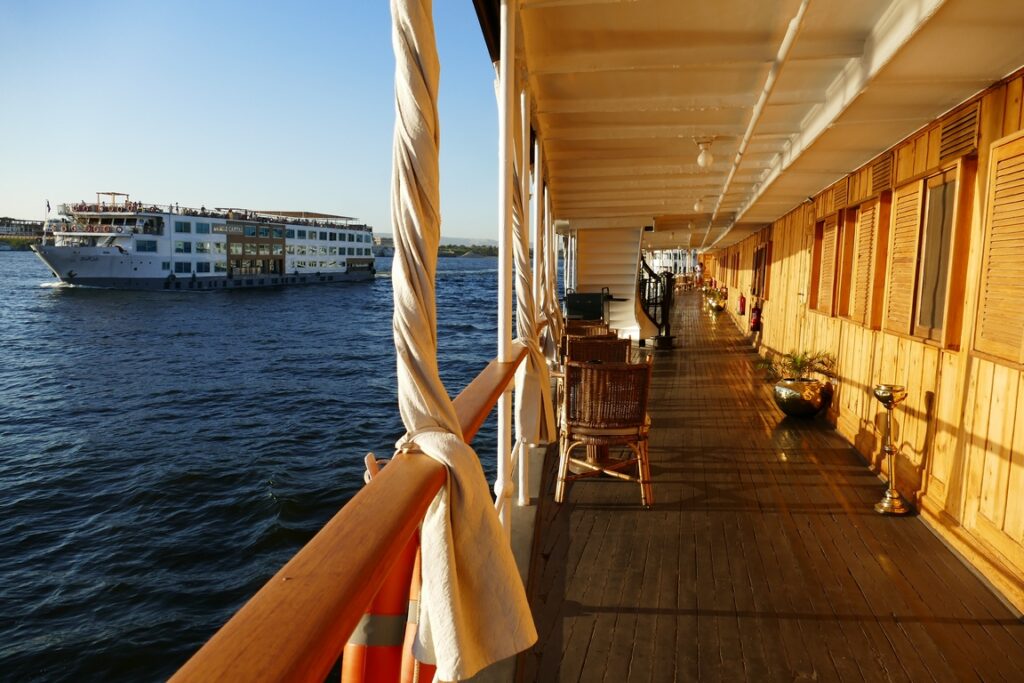
After our embarkation in Luxor, a waiter takes us to a splendid cabin - the Agatha Christie Suite. The round room is located at the bow of the boat and to starboard. Glazed all the way round, it lets you contemplate the Nile and its banks as soon as you wake up. Inside, all the furnishings take us back to the old-fashioned charm of the inter-war period: gilded wooden (or copper) beds, thick ecru cotton curtains, an old dial telephone (connected to reception), furniture sourced from Cairo antique dealers, a framed portrait of King Farouk and his wife, a free-standing bathtub, brass taps. Timeless comfort where television has no place.
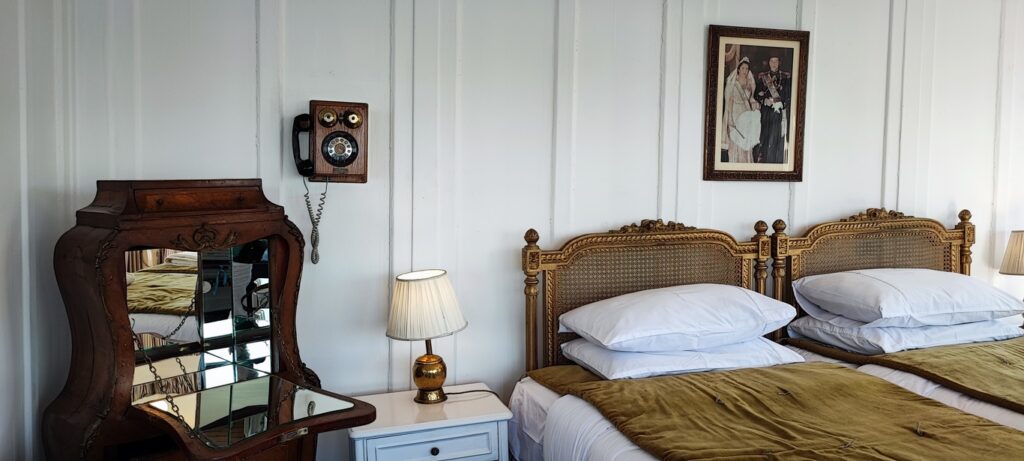
The passageways are just as impressive: gleaming brass, lacquered woodwork, dark teak parquet polished morning and night by the sailors, just like the mahogany staircase. Luxury is in the details!
Each cabin is personalised and bears a name linked to the history of Egypt or the ship.
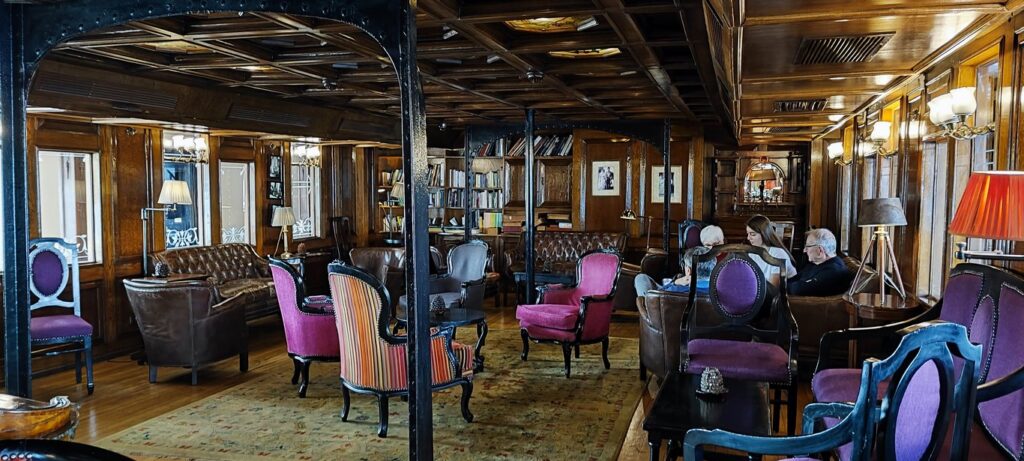
After the tours, we meet up in the lounge bar, snug in velvet-upholstered armchairs or club sofas for an aperitif. The waiters, dressed in traditional red or black galabieh, depending on the service, and wearing a fez, take great care of each guest. We are treated like princes, but welcomed like a member of the family.
Close to the river
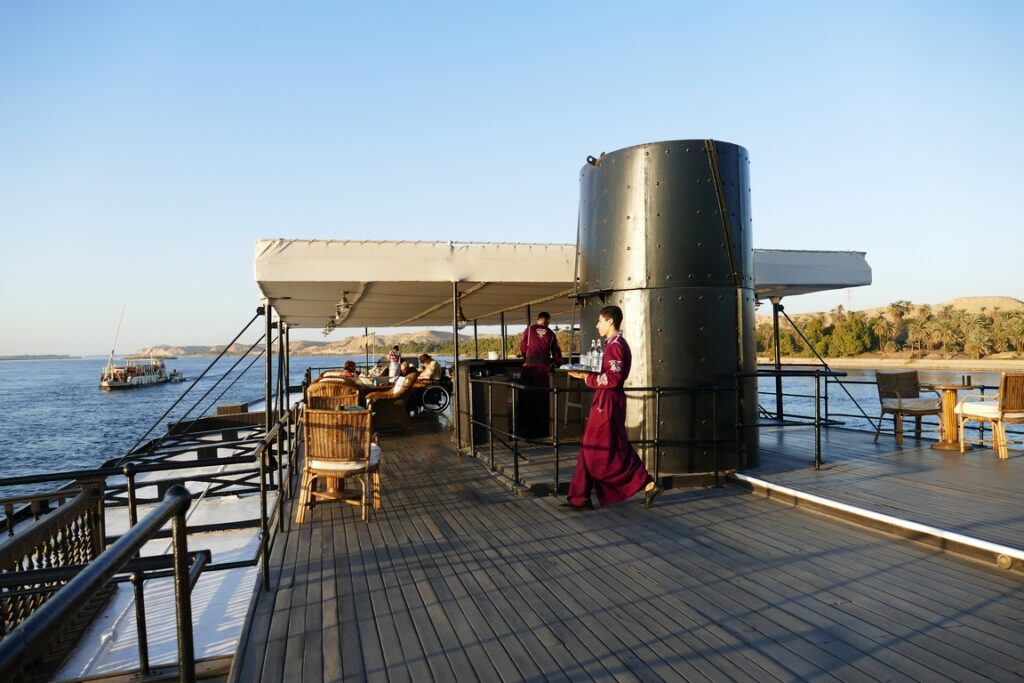
From the sun deck, where tea is served every day at 5pm, the Nile is alive and well. Sailing at 10 kilometres an hour is a privilege. The banks pass slowly by: palm trees, fields of sugar cane and reeds, fishermen with sparrow hawks, children running and waving at us, rush-cutters, washerwomen, ibises and herons frolicking. The heart of the Nile beats to the rhythm of all these tiny lives, the same as 4000 years ago.
Seated on rattan armchairs, passengers play cards while sipping karkade (an infusion of hibiscus flowers) and gazing absent-mindedly at the river banks.
The mornings are devoted to sightseeing. You get up early to make the most of the sites before they are overrun by crowds and the heat is too intense. The valleys of the Kings and Queens (the best known is that of Nefertari, favourite wife of Ramses II, and the most beautiful is that of Seti I), the temples of Karnak, Luxor and its orphan obelisk (the other, given to France by Pasha Mehmet-Ali, is enthroned on Place de la Concorde in Paris).
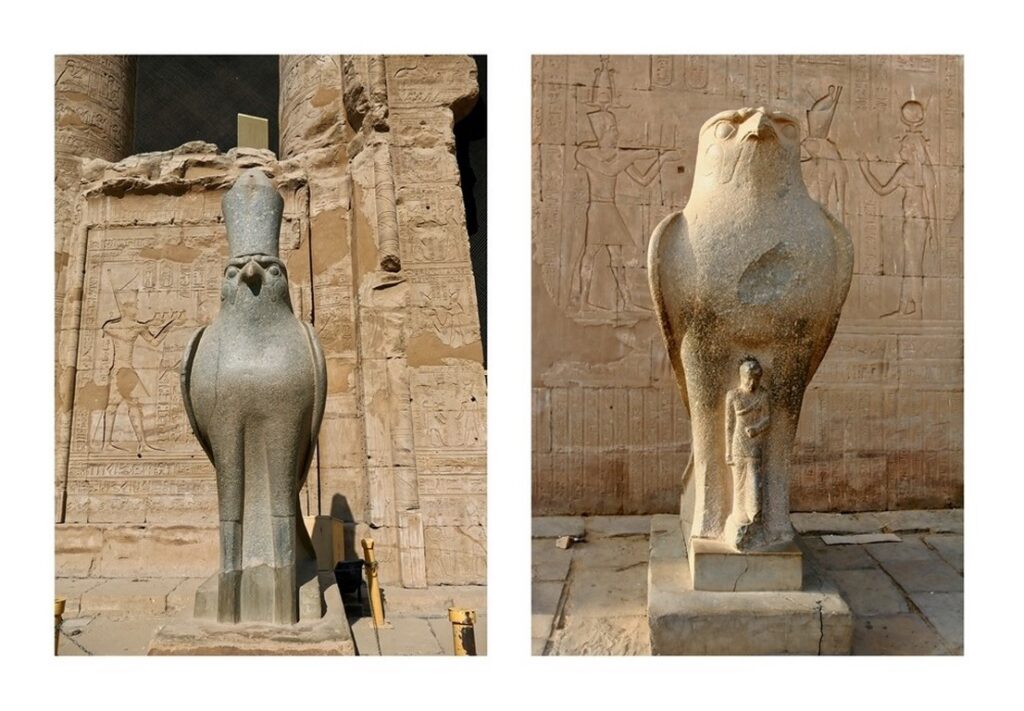
We spend a morning at Edfu, dedicated to the god Horus, then at Kom Ombo, dedicated to the crocodile god Sobeck and the falcon-headed god Haroéris. Not forgetting the final excursions from Aswan to the Ptolemaic temples of Philae and Abu Simbel. Here, we are not talking about the ephemeral, but about the eternal, so present in the lives of the pharaohs.
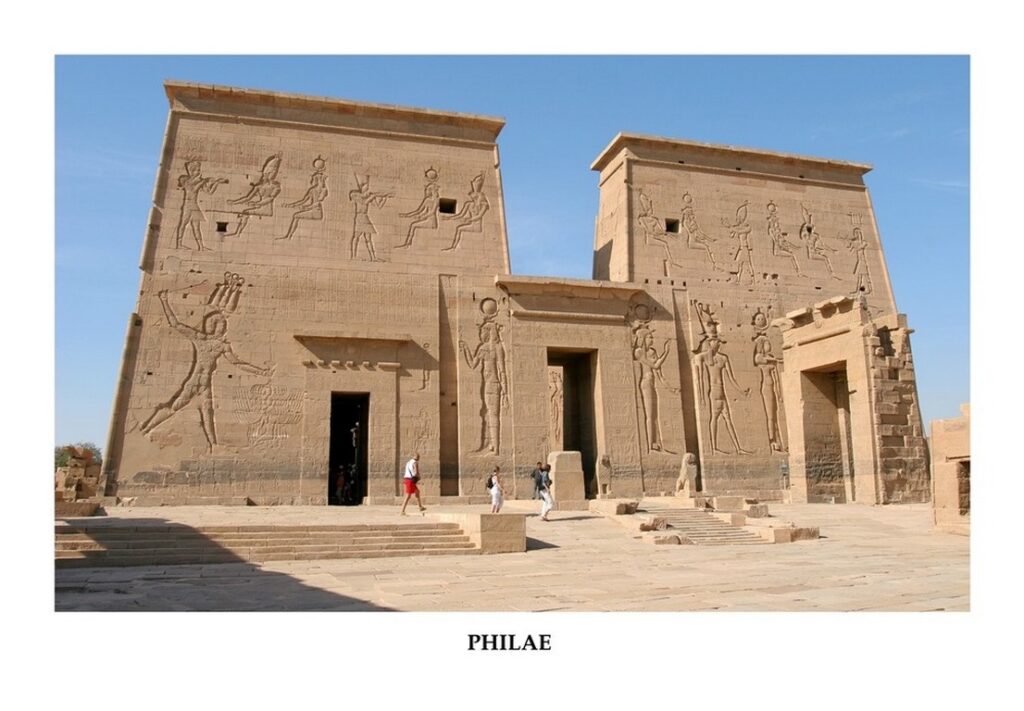
Each time we return on board, a waiter greets us with a damp towel and a delicious lemonade or karkade. In the afternoon, when the sailing resumes, we can relax and sunbathe on the sun loungers on the sundeck or in the shade of the awning. On the Sudan, we take the time to savour the beauty of the river, his colours change with the hours, sometimes green or blue, sometimes steel grey, to the point of giving us the feeling of penetrating his soul.
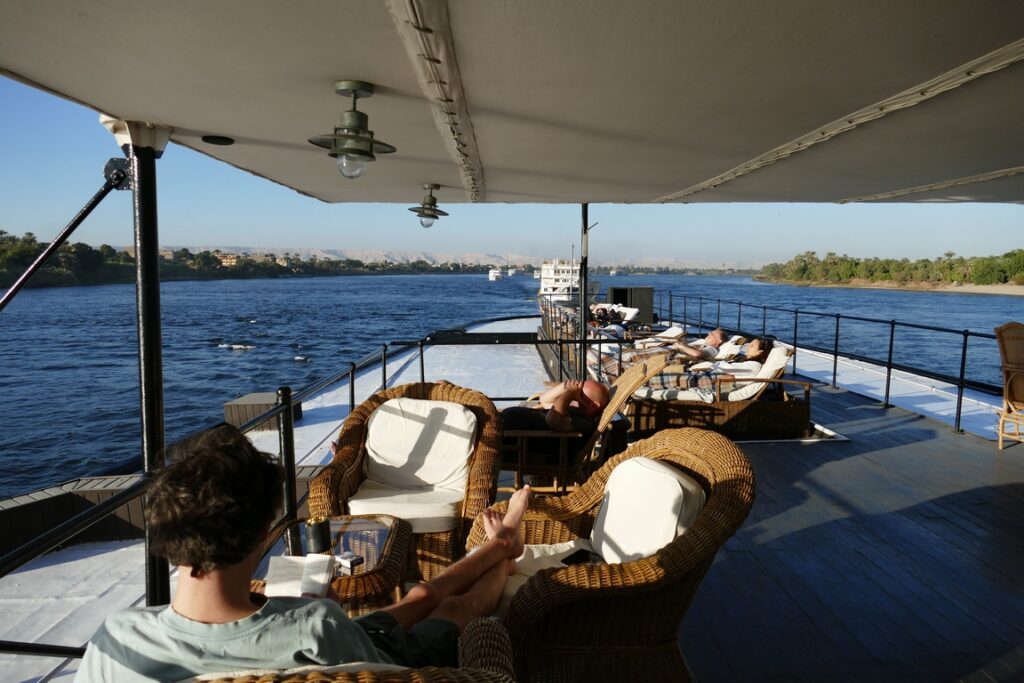
At the heart of the boat
In December and January, the water level is low (between 2 and 3 metres). Chief pilot Ahmed, who has been at the helm for 24 years, and his first assistant, Abdul Nasser, scan the river for sandbanks. " The most complicated part is the passage through the Esna lock," he says. It requires a lot of concentration and vigilance on the part of the whole crew". This is all the more true because the diamond shape of the boat is very unusual, and does not allow visibility of the aft sides or the stern. The Sudan is a hundred-year-old lady that needs to be handled with care!
The paddlewheels on the sides churn the waters of the river in rhythm. Their large blades articulated by two side arms set the pace for the cruise.
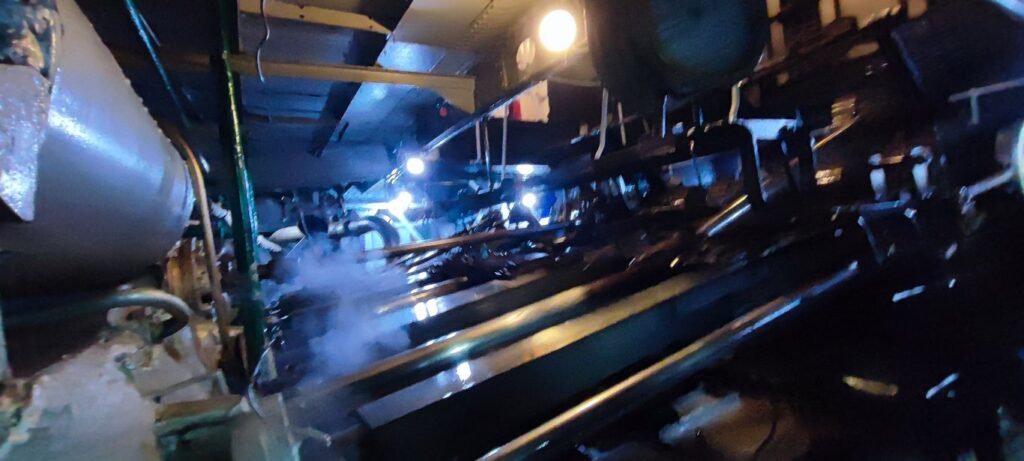
Today, this beautiful machine runs almost in silence. It has to be said that it is lovingly watched over and sprayed with oil every 30 minutes (every 15-20 minutes in summer) by the chief engineer Adel, 30 years in the job, or his assistants. He opens the doors to the burning bowels of the ship. It is here, around a new boiler replaced in 2011, that the magic happens. Water from the Nile is sucked in, heated, evaporated and then condensed before starting the cycle all over again.
"The wonderful thing about great journeys is that they are enchanting even before you set off", wrote Joseph Kessel. We were hoping for a mythical voyage, and it turned out to be just that. It was with regret that we left the boat at Aswan, at the gateway to Nubia. It is said that the land of Egypt stands the test of time. But the trip passed so quickly! Sailing on the Sudan takes us on a powerful inner journey that can be savoured with the eyes and felt with the heart.
Advice
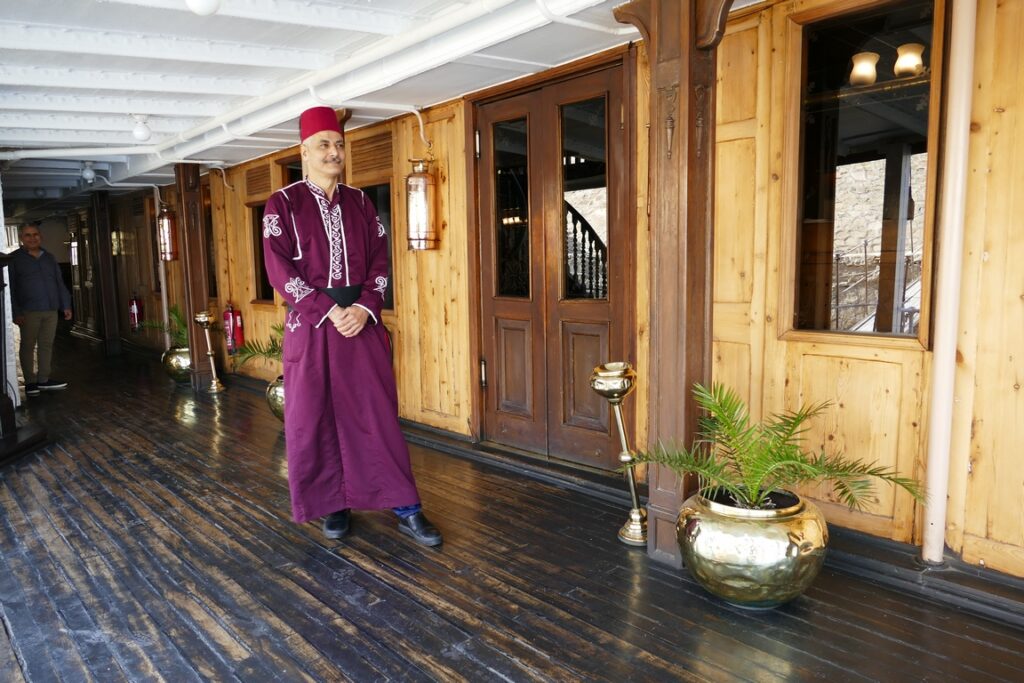
The boat
Le Steam Ship Sudan belongs to the travel agency Voyageurs du Monde. It has 24 cabins, including 6 suites. Spread out along the corridors, the cabins have an average surface area of 17 m². They are equipped with a double bed or two twin beds. There are six suites, four of which are located between the bow and stern of the upper deck. The other two are spread between the main deck and the sundeck. With an average surface area of 25 m², they fully recreate the original charm and authenticity of the boat.
The cruise
The cruise departs from Aswan or Luxor. Some cruises also visit the sites of Qena, Abydos and Denderah. The price includes meals on board,
concierge and English-speaking guide, bottled water, tea, excellent cuisine: the ultimate luxury on the Nile, with added charm.
All cabins are equipped with : Internal telephone, Individual safe, Air conditioning with thermostat , Hair dryer, Welcome Pack on arrival: water and pastries. European standard 220 V sockets. Cabins are non-smoking areas. For safety reasons, children under 7 (except babies) are not allowed on board.
The best time to visit Egypt and sail is from October to May.
Price list
Prices vary according to season, cabin type and activities. Excursions are available to the Abu Simbel temples or to visit the Valley of the Kings in a hot-air balloon. Extensions to the Red Sea or Cairo are also possible.
From 4250€ a week at Comptoir des Voyages 01 86 95 65 17
Tailor-made trips with Voyageurs du Monde 01 84 17 19 01
Eco-responsibility
The water for the passengers and crews' bathrooms and toilets is drawn from the Nile, rigorously filtered and heated by solar collectors installed above the sundeck. The excess water is sent to the boiler, saving 30,000 litres of diesel a year and reducing CO2 emissions by 78 tonnes. Individual air conditioning, low-energy light bulbs, biodegradable cleaning products, etc.
The kitchen
The cuisine is generous and refined, with Western and Oriental flavours, different every day, served by attentive staff who still wear the costumes of royal service. All fruit and vegetables are rinsed with Egyptian mineral water. The cuisine is made using local and organic produce.
Read
A cruise on the Nile: or the fabulous story of the Steam Ship Sudan (preface Jean-François Rial; foreword Robert Solé), Jean-François Rial and collective. Albin Michel, 2022.
Text and Photos : Brigitte Postel
This report appeared in part in the May 2024 issue of Neptune Yatching Moteur.

